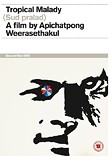| Reviews & Columns |
|
Reviews DVD TV on DVD Blu-ray 4K UHD International DVDs In Theaters Reviews by Studio Video Games Features Collector Series DVDs Easter Egg Database Interviews DVD Talk Radio Feature Articles Columns Anime Talk DVD Savant Horror DVDs The M.O.D. Squad Art House HD Talk Silent DVD
|
DVD Talk Forum |
|
|
| Resources |
|
DVD Price Search Customer Service #'s RCE Info Links |
|
Columns
|
|
|
Tropical Malady
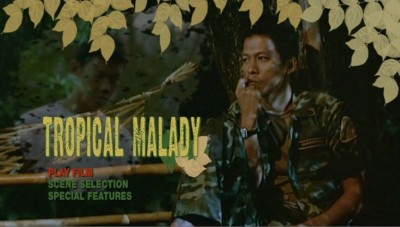
Despite the controversy, Tropical Malady was awarded the Jury Prize and was a finalist for the Golden Palm, losing out to Michael Moore's incendiary Fahrenheit 9/11 which arguably won less because of its artistic merit than because it was a vehicle for expressing collective contempt for the war-mired Bush Administration.
Though Tropical Malady is open to multiple interpretations, it's not nearly as inscrutable as some critics have charged. On one level, it's a fairly straightforward film told in two parts. The first half is a chaste homosexual love story between Keng (Banlop Lomnoi), a forest patrol soldier, and Tong (Sakda Kaewbuadee), a manual laborer in the village within Keng's patrol zone. The second part is a fantastical cat-and-mouse chase between a forest patrol soldier (Banlop Lomnoi) and the ghost of a shape-shifting shaman (Sakda Kaewbaudee) in which the roles of hunter and hunted are up for grabs.
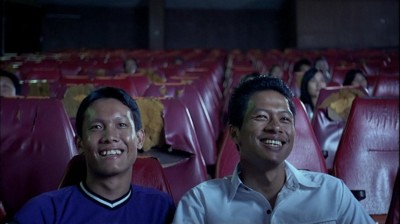 | 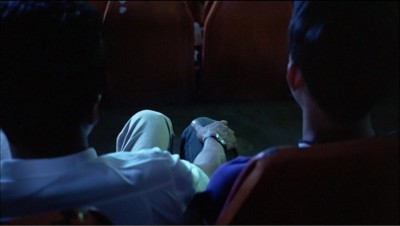 |
The love story explored in the first half of Tropical Malady is extremely sweet. Keng is a tall, attractive soldier, as at ease in urban settings as he is in the forest. Tong is a smaller, younger, and shyer villager embarrassed by his own illiterate provincialism, charmed by the attention of the soldier. Keng romantically pursues Tong throughout the first half of film building from flirtatious looks, to rough-and-tumble play, and on to prolonged hand-kissing.
It's here at roughly the hour mark that Apichatpong begins his second story in which a forest patrol soldier tracks a shape-shifting man-beast that's killed livestock in the area and may be responsible for the disappearance of a local villager. This story based on Thai folktales is lyrically enchanting, almost bereft of dialogue, and open to wide interpretation.
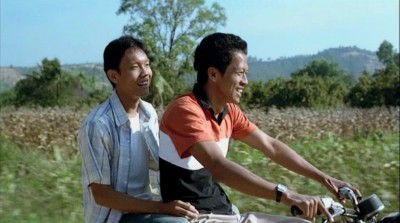 | 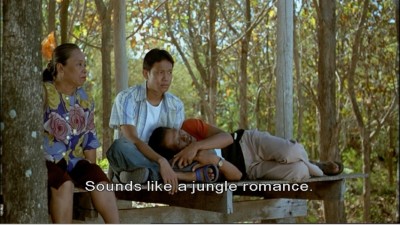 |
The first half of Tropical Malady is shot in a style reminiscent of Apichatpong's first feature film, the experimental documentary Mysterious Object at Noon (Dokfa nai meuman, 2000). Filmed on location in the countryside, a village and a provincial city, the main characters and supporting-characters/bystanders frequently appear cognizant of the camera. The presence of the camera seems to relax the inhibitions of the main characters while partially immunizing their actions from the approbation of supporting-characters/bystanders who are more apt to look into the camera than take notice of the flirting between the men.
The second half of the film is shot almost entirely within the confines of a forest. Here the documentary realism of the first half of the film gives way to an enchanting fantasty in which the spirits of animals are visible to the eye, baboons speak, trees glow, and a tiger transforms into a man (Sakda Kaewbaudee). Apichatpong leaves interpretation to the viewer. Perhaps this unnamed tracker is Keng. If so, the shape-shifter could be Tong (either voluntarily or through possession) or it could well be a disguise conjured from Keng's unconscious. Or perhaps this story of hunter and hunted is a parallel reality (either allegorical or fantastical) retelling of the story of Keng's romantic pursuit of Tong.
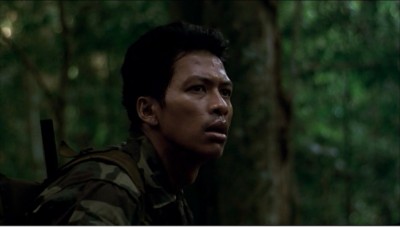 | 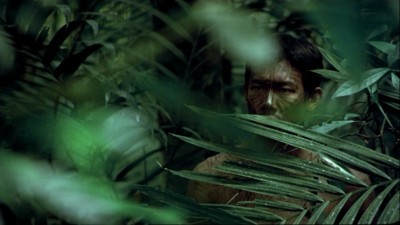 |
Though Tropical Malady is puzzling it need not be vexing. There's poetry to the film grounded in the sumptuous visual and aural tableau that complements the narrative, but also transcends it. There's also a sweet tenderness to the romance and a magical lyricism to the chase that keeps the film thoroughly engaging even when the narrative slows to a crawl. Tropical Malady can be appreciated on so many levels that it should find some resonance with most any viewer that enjoys avant-garde cinema.
Presentation
This review is of the European PAL-format release of Tropical Malady from the UK-based boutique DVD label Second Run.
Video:
Presented in its original aspect ratio of 1.78:1, Tropical Malady is enhanced for widescreen. Color, sharpness, and contrast look excellent though there is some minor print damage, excessive edge enhancement, and mild aliasing.
Audio:
The original Thai audio is presented in Dolby Digital 5.1 and 2.0. The 5.1 mix is dynamic and immersive with no noticeable dropouts or distortions.
Optional English subtitles are provided.
Extras:
The extras include an interview with filmmaker Apichatpong Weerasethakul (10:18), production stills, a storyboard of the jungle encounter, a booklet with an essay by film historian Tony Ryans, and the seventeen-minute short film Thirdworld which was shot on location in a small village during the making of Mysterious Object at Noon. Assembled from disparate, rough Super-8 footage of a village in predawn motion with recorded sounds of conversation, the murky video, muffled audio, and burnt in subtitles enhance the odd charm of this short.
Final Thoughts:
Tropical Malady is the rare film that offers something new on each viewing. It is highly recommended for fans of languidly-paced, thought-provoking experimental films.
Collectors who already have the American release of this film from Strand Releasing which suffered from PAL-to-NTSC ghosting and an inferior 2.0 DD mix may wish to consider a double-dip for the superior image and sound quality as well as the unique extras.
|
| Popular Reviews |
| Sponsored Links |
|
|
| Sponsored Links |
|
|
| Release List | Reviews | Shop | Newsletter | Forum | DVD Giveaways | Blu-Ray | Advertise |
|
Copyright 2024 DVDTalk.com All Rights Reserved. Legal Info, Privacy Policy, Terms of Use,
Manage Preferences,
Your Privacy Choices | |||||||









